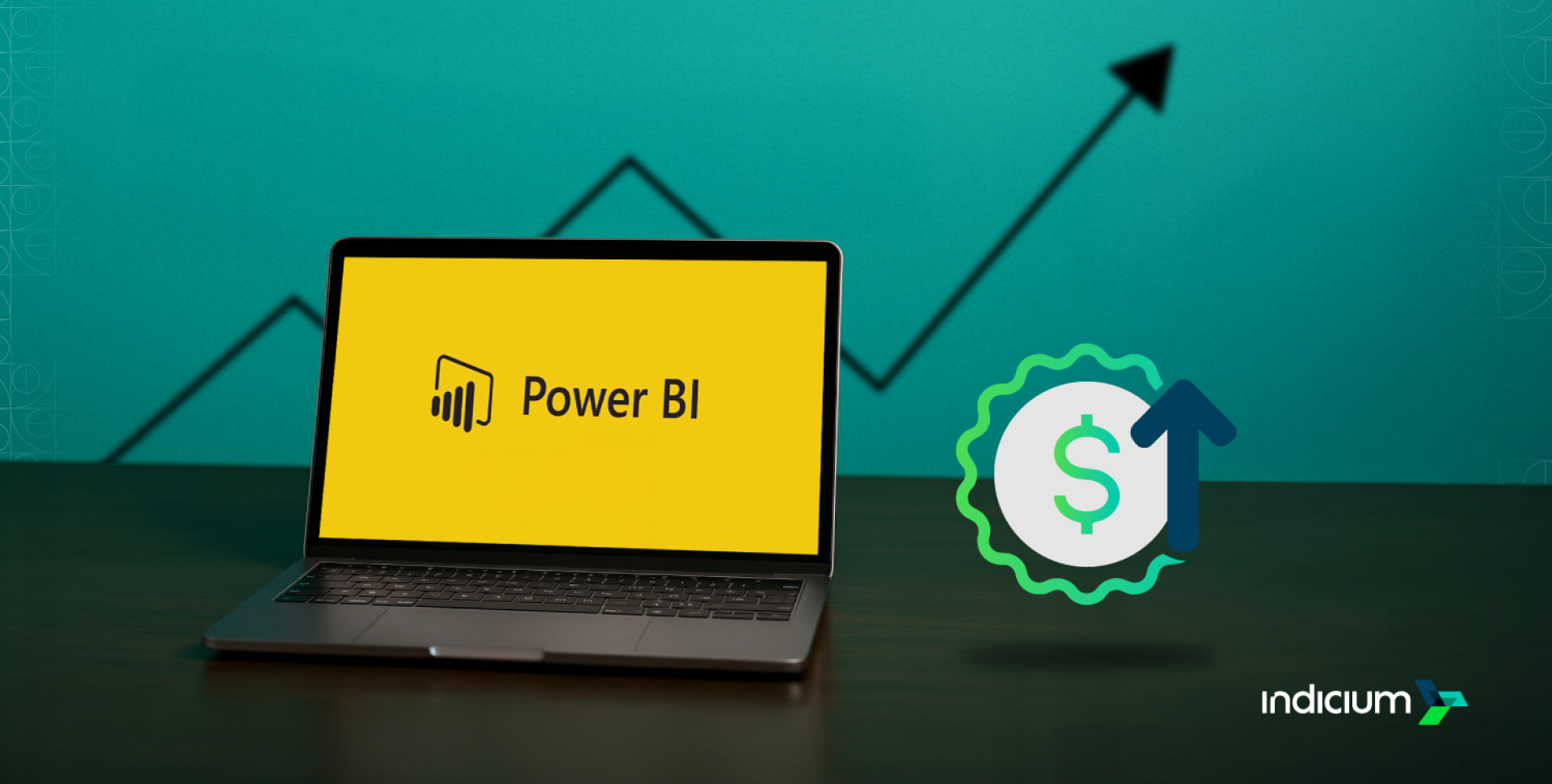
Power BI Price Hike: Cut Costs & Optimize TCO
-
 Written by
Written by -
CategoryAI & Data Analytics
-
Published DateApril 2, 2025
Microsoft recently announced significant price increases for Power BI, effective from April 1, 2025. Power BI Pro will see a 40% increase, from $10 to $14 per user/month, while Power BI Premium per User (PPU) will increase from $20 to $24 per user/month. This adjustment may directly impact companies’ data budgets and requires careful analysis on how to manage the costs associated with these changes.
Direct Impact on Power BI
With the Power BI price increase per user, the main way to mitigate the financial impact is to conduct a detailed audit to assess who truly needs a Power BI Pro or Premium license. Since the cost is calculated per user, reducing the number of licensed users can lead to significant savings for organizations. Additionally, for companies with large volumes of users and reports, migrating to Power BI Premium Per Capacity, currently part of Microsoft Fabric, could be an interesting alternative.
If you are considering migrating to Power BI Premium Per Capacity, which offers licensing based on capacity (not per user), it’s worth conducting a detailed evaluation to determine whether this change makes sense for your scenario. In this case, optimizing queries and dashboard performance becomes essential, as, by adopting capacity-based licensing, costs will be more directly related to data volume and processing resource usage.
Recommended Actions to Mitigate the Price Increase Impact
Given that the Power BI price increase is user-based, the main strategy to mitigate the financial impact is to optimize the number of required licenses. Below are some actions you can take:
1. License and User Audit
Conduct a detailed review to assess who truly needs Power BI Pro or Premium licenses.
2. Migration to Power BI Premium Per Capacity
For organizations with a large number of users or those needing advanced sharing and collaboration features, evaluating migration to Power BI Premium Per Capacity/Microsoft Fabric can be an interesting solution. This migration requires careful analysis of data usage, the number of users accessing shared content, and infrastructure performance.
3. Query and Dashboard Optimization (for migration to Capacity)
If migrating to Power BI Premium Per Capacity/Microsoft Fabric is a good option, optimizing queries and dashboard performance becomes crucial. With capacity-based licensing, costs are more directly related to data volume and processing resource usage. Improving query performance and eliminating unnecessary data can help reduce resource consumption and, consequently, control costs.
4. Training and Capacity Building
Investing in training for teams on how to use Power BI more efficiently can reduce the need for additional licenses, improve productivity, and ensure that licenses are used optimally.
Holistic View: Optimizing the Data Platform's TCO
In addition to the Power BI licensing costs, it is essential to take a holistic approach to optimize the TCO of the entire data platform. The Power BI price increase serves as a reminder to reassess the cost of all parts of the data infrastructure.
TCO Components for Data Platforms:
1. Licensing for Tools and Software: Including Power BI and other BI solutions and data tools.
2. Infrastructure: Costs associated with servers, cloud, networks, and other technologies required to support and process large volumes of data.
3. Team and Support: Costs for engineers, data scientists, and other professionals involved in maintaining and using the platform.
4. Maintenance and Development Processes: Time and resources required to keep data updated and platforms running, as well as to develop new models and data products.
5. Monitoring and Performance: Tools and processes necessary to ensure that data is accessible efficiently and that the platform performs adequately.
How to Optimize the Total TCO of the Data Platform
To reduce the impact of the Power BI price increase and optimize the TCO of the data platform as a whole, consider the following actions:
1. Infrastructure Cost Reduction:
- Optimization of Models and Queries: Although query optimization does not directly affect licensing costs, it can result in significant savings in processing and storage resources, which affects the overall use of the platform.
- Optimization of Pipelines and Performance: Improving the efficiency of data pipelines can reduce excessive resource usage and lower operational costs.
2. Implementation of FinOps (Financial Operations):
- Resource Rightsizing: Adjust the resources used (rightsizing) to ensure that each area uses the minimum necessary, ensuring budget accuracy of up to 90%.
- Cost Allocation Strategies: Implement a cost allocation strategy based on actual resource usage, ensuring a more efficient distribution of costs across different areas of the company.
3. Maintenance Effort Reduction:
- Implementation of End-to-End Observability: With monitoring tools and alerts, you can reduce maintenance costs, decrease the number of open tickets, and ensure greater efficiency, resulting in up to 40% reduction in maintenance effort.
4. Reduction in Data Product Development Time:
- Use of AI-Assisted Tools: The use of AI-assisted development tools, such as drag-and-drop or AI-assisted code, can reduce development time by up to 35%, freeing up resources for new projects and innovation.
Action Plan: Continuous TCO Optimization in the Context of Power BI
Adopting a continuous TCO optimization plan involves specific actions that ensure your data platform remains efficient and that you make the most of the resources you’ve acquired. In the case of Power BI, the focus should be on license management and, if migrating to capacity-based licensing, optimizing infrastructure and queries. Here are the steps to optimize continuously:
1. Cost Evaluation and Optimization Opportunities
Conduct a detailed analysis to evaluate who truly needs Power BI Pro or Premium licenses. This includes auditing users to adjust licenses, whether by moving them to more affordable options or considering migrating to Power BI Premium Per Capacity. If migration is chosen, it’s important to evaluate current data usage, the number of users accessing shared content, and infrastructure performance.
2. Implementation of Cost Reduction Strategies
For companies that opt for migration to Power BI Premium Per Capacity/Microsoft Fabric, optimizing queries, reducing unnecessary data, and improving dashboard performance become crucial. By optimizing infrastructure and data pipelines, you will reduce the impact on operational costs and maximize the use of contracted capacity. This helps ensure that processing resources are used efficiently, without overload.
3. Establishment of Continuous Improvement Routines:
To ensure continuous TCO optimization, it’s crucial to create a cycle of continuous monitoring. This includes regularly checking license usage, query performance, and cost-benefit analysis. Additionally, regular training for data teams ensures that FinOps best practices are followed, focusing on efficient use of resources and long-term cost reduction.
Take Control of Your Data Costs Today
Don’t let the Power BI price increase impact your data budget. Adopt a strategic approach to optimize your data platform and free up budget for new projects and innovation. Contact us for a free TCO assessment and discover how we can help you reduce infrastructure costs, optimize data pipelines, and improve operational efficiency with our modular and integrated solution.
Ready to optimize your data platform and reduce costs? Speak with one of our experts today and take the first step toward more efficient data management!
About Indicium

David Eller
Stay Connected
Get the latest updates and news delivered straight to your inbox.




